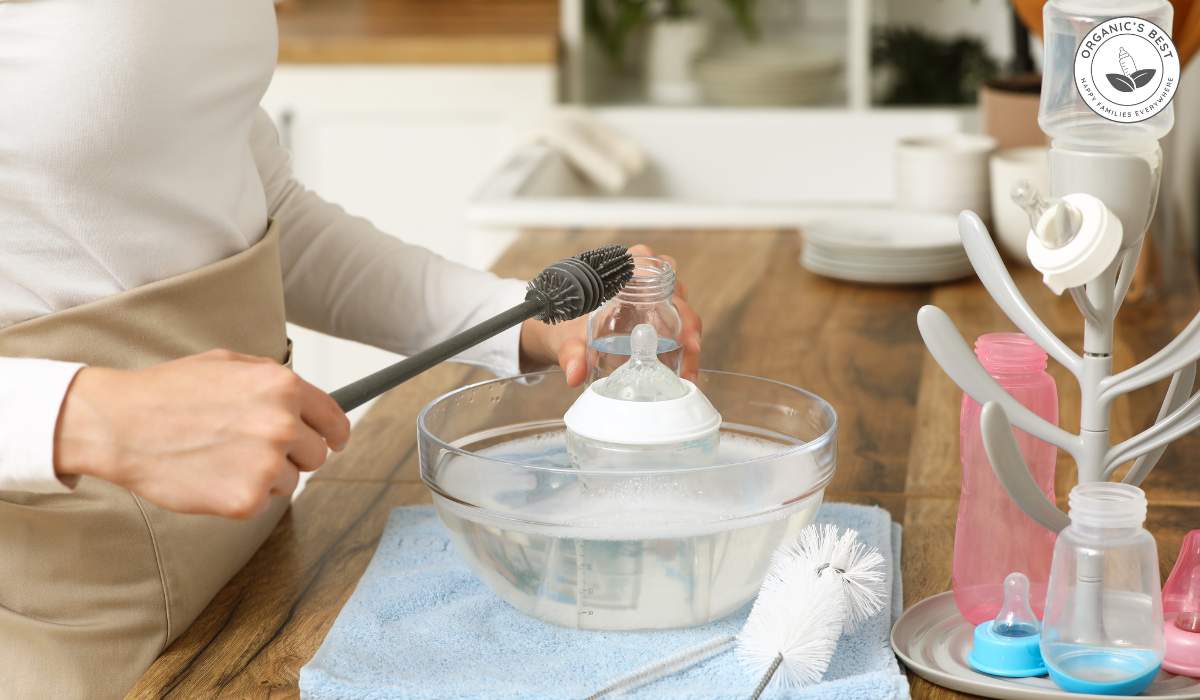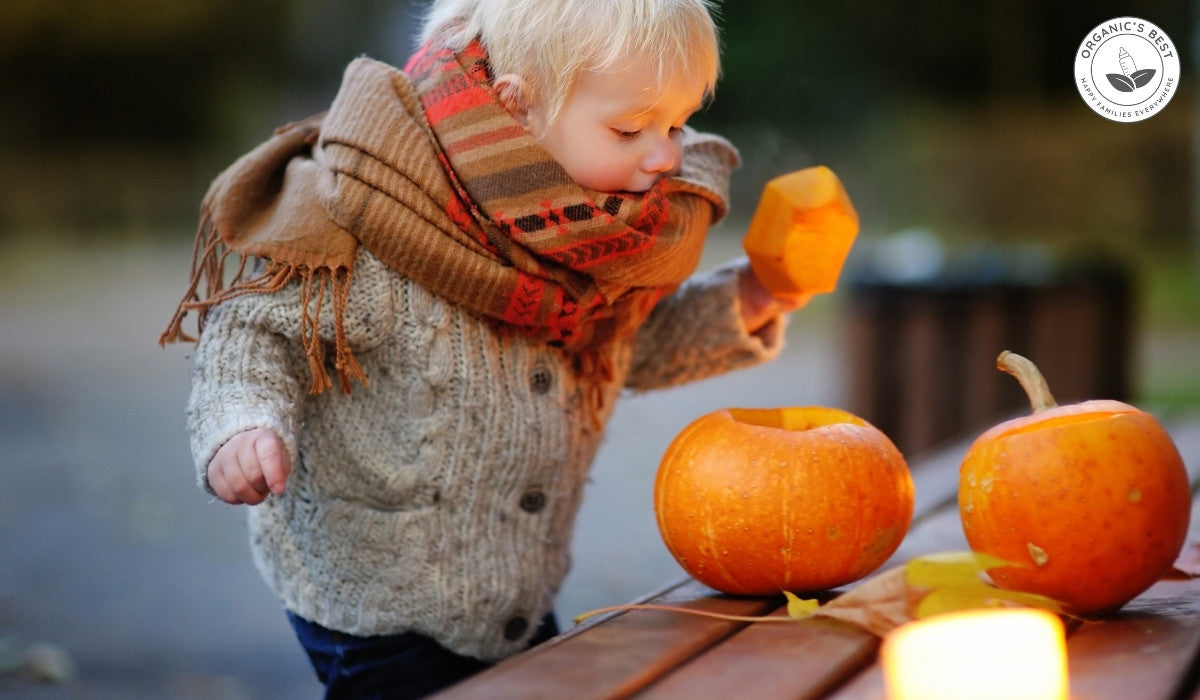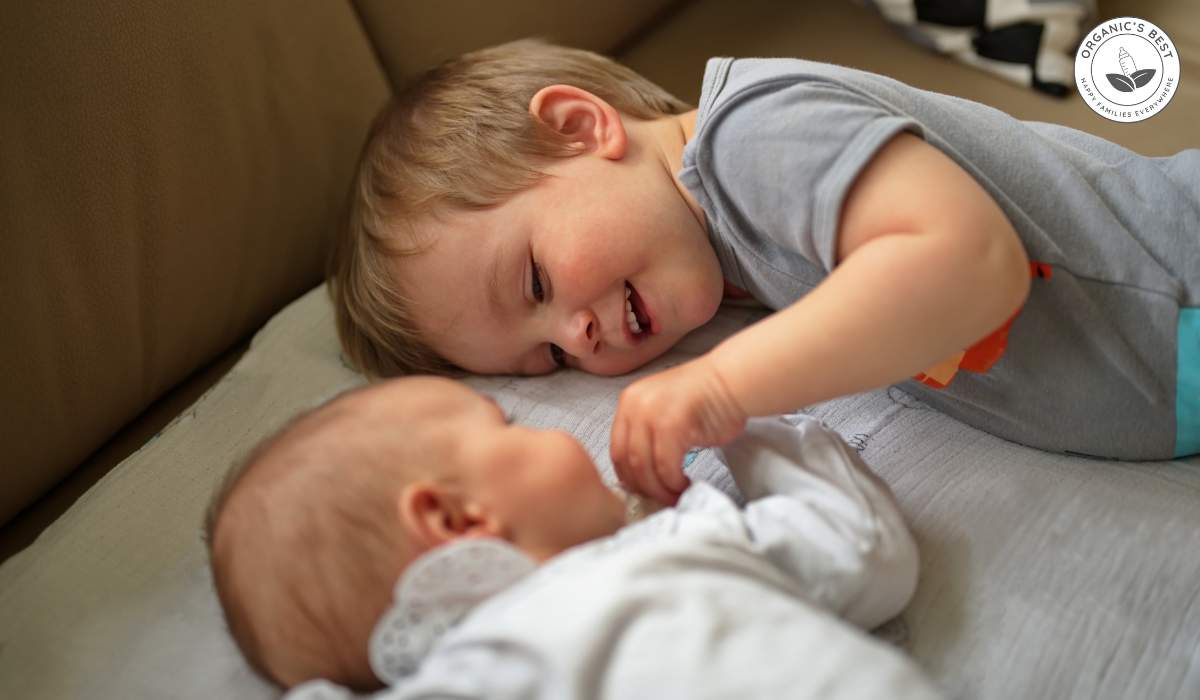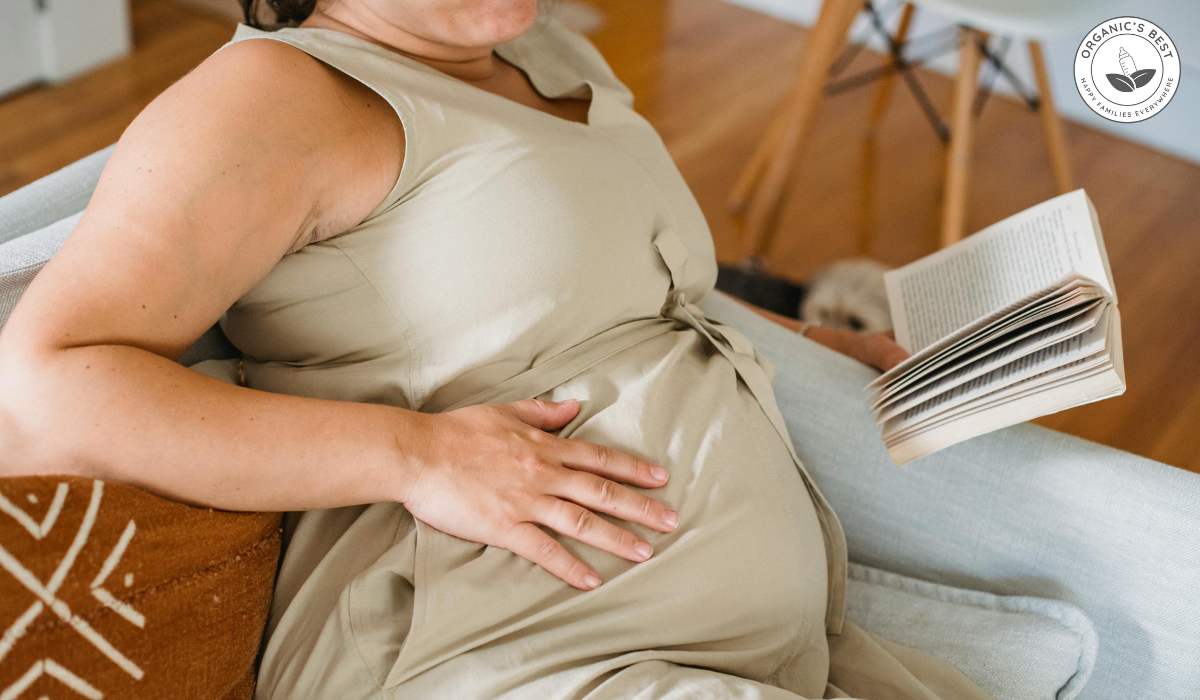Click to Get 2 FREE Boxes/Cans
BABY FORMULA
Offering new parents top-quality European infant formula from renowned brands like HiPP, Holle, Kendamil, and more. If you’re uncertain about which product to choose, our Formula Finder can help you make the best decision for your baby.
Baby Food
Offering new parents a premium selection of European baby foods, including jars, pouches, cereals, and snacks from esteemed brands like HiPP and Holle.
Sterilizing Baby Bottles: What You Need to Know About Safety and Hygiene
by Agustina Fernandez August 12, 2025 8 min read

If you've ever stood at your kitchen sink late at night, staring at a pile of bottles, wondering, "Do I have to do this right now?", you're not alone.
Keeping your baby's feeding gear clean might feel like a chore, but it's one of the simplest and most effective ways to keep them healthy. This is because newborns and young infants are still adjusting to life outside the womb, and their developing immune systems make them especially vulnerable to harmful bacteria.
While regular bottle cleaning with soap and water is essential and should not be skipped, sterilizing bottles, nipples, and other feeding items adds an extra layer of protection, especially in the first few vulnerable months of life.
This guide will walk you through why sterilizing matters, when to do it, and the safest ways to get the job done.
Table of Contents
- First Up: Do You Have to Sterilize Baby Bottles?
- What Are the Benefits of Sterilizing Baby Bottles?
- All About Baby Bottle Sterilization, Sanitizing, and Cleaning
- How to Sterilize Baby Bottles: Best Ways and Methods
- How to Dry and Store Baby Bottles After Sterilizing
- How Often Should You Sterilize Baby Bottles?
- What Are the Risks of Not Sterilizing Baby Bottles?
- When Can You Stop Sterilizing Baby Bottles?
- Answering Your Questions
First Up: Do You Have to Sterilize Baby Bottles?
Sterilizing bottles matters, but the approach can vary depending on your baby's developmental stage and health. What works for one family might be different for another, but there are general guidelines to follow as issued by public health agencies.
Keeping feeding gear clean is always important, but how strict your routine needs to be will change as your baby grows and their immune system gets stronger.

According to the Centers for Disease Control and Prevention (CDC), the groups that most benefit from sterilizing baby bottles are:
-
Infants younger than three months
-
Preterm babies
-
Babies with weakened immune systems
Once your baby is past the three-month mark, healthy, and full-term, the daily deep clean isn't always required. Thoroughly washing bottles in hot, soapy water after every use is often enough. Still, there are situations when breaking out the sterilizer is smart, such as before you use a new bottle for the first time, after your baby has been unwell, or if a bottle has been sitting unused for a few days.
In summary, you may not need to sanitize baby bottles every single day once your baby gets older. Still, for certain situations, it adds an extra layer of protection that's well worth the few extra minutes.
What Are the Benefits of Sterilizing Baby Bottles?
Even if a clean baby bottle looks spotless, it can still harbour tiny amounts of bacteria, viruses, or fungi. Since breast milk and formula are packed with nutrients, they can create the perfect environment for harmful germs to grow if any residue is left behind on feeding equipment.
Sterilizing baby bottles helps remove or kill these harmful microorganisms, giving you peace of mind that each feeding is as safe as possible.
The key benefits of sterilizing include:
-
Kills harmful bacteria and viruses that regular washing might miss
-
Reduces the risk of infections and digestive issues in your baby
-
Provides extra protection for vulnerable infants with developing or weakened immune systems
-
Ensures feeding equipment is completely clean, creating a safer feeding environment
All About Baby Bottle Sterilization, Sanitizing, and Cleaning
Below, we'll cover how to sanitize baby bottles, the different ways to sterilize them, and the step-by-step cleaning routines that help keep feeding gear safe and germ-free.
Cleaning Baby Bottles
Before we get into sterilizing, let's begin with the very first, and arguably most important step, which is cleaning and sanitizing baby bottles. This is because sterilization is most effective on bottles that are already free of milk residue and visible buildup, so a proper wash should always come first.
Right after feeding, give each bottle, nipple, ring, and any other parts a quick rinse under cool running water. This simple step keeps milk or formula from drying onto the surfaces, which can make scrubbing much harder later on.
Of course, we know that parenting is a full-time job and sometimes that rinse just isn't happening in the moment. If that's the case, no worries, just be sure to give any bottles that have been sitting for a while a thorough clean before using them again.
After the initial rinse, clean the baby bottles more thoroughly in hot, soapy water or place the items in the dishwasher if they're labeled dishwasher-safe.
When hand-washing, it's best to use a bottle brush reserved only for baby feeding items, as this helps prevent cross-contamination from other dishes. Pay extra attention to bottle threads, nipple holes, and any tiny crevices where milk can hide. You may also want to use a small nipple brush for a more detailed clean. Once washed, rinse everything well to ensure no soap residue remains.
Top Question: Can You Wash Baby Bottles in the Dishwasher?
Since the baby bottle washing process can be time-consuming, you're likely wondering if there are any ways to streamline it that are safe and effective.

Most modern baby bottles can be washed in the dishwasher on a hot-water cycle, ideally with a heated dry option. You simply have to place smaller parts like nipples, rings, and caps in a mesh basket to keep them from falling through the racks.
Furthermore, the CDC states that "If you use a dishwasher with hot water and a heated drying cycle (or sanitizing setting) to clean infant feeding items, a separate sanitizing step is not necessary."
Just remember to use dishwasher-safe baby bottles if you're choosing to wash baby bottles in dishwasher.
How to Sterilize Baby Bottles: Best Ways and Methods
When washing and sterilizing baby bottles, there's more than one safe and effective way to get the job done. The right method for you depends on your lifestyle, your baby's needs, and the type of bottles you use.
Here are the most common approaches:

Boiling
Sterilizing baby bottles in boiling water is simple, effective, and inexpensive. Place your clean baby bottles, nipples, and other parts into a large pot of water, making sure each item is fully submerged. Bring the water to a rolling boil and keep it going for at least five minutes. Carefully remove the bottles with clean tongs and place them on a clean surface or drying rack to air-dry completely.
Boiling works for most bottles, but always double-check the manufacturer's guidelines, as some plastics may warp or degrade over time with repeated exposure to high heat.
Steam Sterilizers
Electric steam sterilizers or microwave steam bags use high-temperature steam to sanitize bottles in a matter of minutes. They're quick, convenient, and great for parents who go through multiple bottles a day.
Electric models often have drying functions, while microwave versions are portable and easy to store. These are ideal for busy households where speed matters.
Cold Water / Chemical Sterilizing Solutions
When you're traveling, camping, or somewhere without easy access to boiling water or electricity, chemical sterilizing tablets or liquids can be a lifesaver. These sterilizing solutions for baby bottles, when mixed with cold water, kill bacteria, viruses, and fungi in about 30 minutes.
No matter which method you choose, always check your bottle manufacturer's care instructions to prevent damage and ensure you're getting the full germ-killing benefits. And remember, sterilizing works best on pre-cleaned baby bottles.
Does Bottle Material Matter When Sterilizing?
Some bottles are made from heat-resistant materials like glass or BPA-free plastic, which can handle boiling or steam. Others may warp or degrade if exposed to high heat repeatedly. If in doubt, check the care instructions before choosing your sterilizing method.
How to Dry and Store Baby Bottles After Sterilizing
Once you've finished sterilizing your baby bottles and their parts, the next important step is drying and storing them properly to keep them clean and ready for use.
Start by placing the clean baby bottles, nipples, rings, and any other components on a clean, dry towel or, ideally, a dedicated bottle drying rack.
Bottle racks are designed to allow air to circulate freely around each piece, speeding up the drying process and reducing the chance of moisture lingering, which can encourage bacterial growth.
It's best to avoid using regular dish towels or cloths to dry bottles, as these can sometimes harbour bacteria or lint that could transfer back onto your feeding gear. Instead, opt for air drying in a clean space where bottles aren't crowded or touching other kitchenware.
Once everything is completely dry, which might take a few hours, store the bottles and parts in a clean, closed cabinet or a container with a secure lid. This helps protect them from dust, airborne germs, and other contaminants while they wait for the next feeding.
How Often Should You Sterilize Baby Bottles?
For newborns, sterilizing after every feed is best since their immune systems are still building. As your baby gets older and stronger, you can cut back and start sterilizing just occasionally, like after illness, travel, or if bottles haven't been used for a while.
What Are the Risks of Not Sterilizing Baby Bottles?
We know there's already so much to think about when caring for your little one, and the last thing you need is added stress. But it's important to understand that skipping sterilization can leave behind harmful bacteria, viruses, and fungi.
For newborns and very young babies, this exposure can lead to infections, upset stomachs, diarrhea, vomiting, or even more serious health problems. While the risk decreases as your baby grows and their immune system strengthens, those early months are when they're most vulnerable.
When Can You Stop Sterilizing Baby Bottles?
Thankfully, this meticulous cleaning phase doesn't last forever! Most experts agree that once your baby is over 12 months old and eating solids, sterilizing is no longer necessary, as their immune system is stronger. At that age, regular thorough cleaning will be enough.
Answering Your Questions
If you're short on time, here's a quick roundup of the most common questions about baby bottle cleaning!
Should I Wash Baby Bottles Before Sterilizing?
Absolutely. Sterilizing isn't a replacement for washing; it's the final step in making sure bottles are safe and ready for your baby.
First, you'll want to thoroughly wash bottles, nipples, caps, and any other parts with warm, soapy water or run them through the dishwasher if they're dishwasher-safe. This removes any leftover formula, breast milk residue, or buildup that can cling to bottle surfaces.
Once everything is washed and rinsed, then you can move on to sterilizing.
What is the Safest Way to Sterilize Baby Bottles?
The best way to sterilize baby bottles depends on your bottle type and lifestyle. Boiling is one of the oldest and most reliable options.
Alternatively, electric steam sterilizers or microwave steam bags offer a faster, more hands-off option, and cold water or chemical sterilizing solutions are another method, particularly for travel or when you don't have access to boiling water or electricity.
Do Baby Bottles Have to Be Sterilized After Each Use?
Not necessarily, as it depends on your baby's age and health. For newborns under three months old, babies who were born prematurely, or little ones with certain health concerns, sterilizing after every feeding is strongly recommended.
However, if your baby is healthy, full-term, and over the three-month mark, sterilizing can be done less frequently, such as once every few days, or when there's a specific reason, like after an illness or if a bottle has been sitting unused for a while.
|
Disclaimer: Please be aware that this information is based on general trends in babies, and it is not medical advice. Your doctor should be your first source of information and advice when considering any changes to your child’s formula and when choosing your child’s formula. Always consult your pediatrician before making any decisions about your child’s diet or if you notice any changes in your child. Breastfeeding is the best nutrition for your baby because breast milk provides your child with all the essential nutrients they need for growth and development. Please consult your pediatrician if your child requires supplemental feeding. |
Agustina Fernandez
Dr. Agustina Fernandez earned her medical degree from the prestigious Universidad Nacional de Córdoba, Argentina. With a deep-rooted passion for pediatrics, Dr. Fernandez is currently on the path to specializing in children's healthcare. Recently, she has delved into the vital field of infant nutrition. Her research interests include breastfeeding, infant formula, and baby food in little ones’ formative years. Dr. Fernandez's commitment to this area of study underscores her dedication to ensuring the health and well-being of children from their earliest days.
Leave a comment
Comments will be approved before showing up.
Also in Organic Infant Nutrition and Health Blog

10 Fun Fall Activities for Kids and Toddlers
by Agustina Fernandez November 18, 2025 5 min read
Read More
How to Introduce Toddler to New Baby: Tips for Easing Jealousy and Building Bond
by Agustina Fernandez November 11, 2025 8 min read
Read More
Pregnancy After 40: What to Expect When Having a Baby at 40+
by Agustina Fernandez November 04, 2025 9 min read
Read More